Results 8,091 to 8,100 of 12096
Thread: Anandtech News
-
05-03-18, 11:49 AM #8091
Anandtech: German IT Distributor Publishes AMD+Intel Roadmaps: Z490, Z390, 8-Core CFL
With Computex just around the corner, a lot of thought is being put to exactly what are we expecting to see at the show. There are questions about AMD’s next generation Threadripper parts, and when Intel is going to launch the Z390 chipset whose name has been floating around for a number of months now. Due to a video published online by bluechip Computer, an IT Distributor based in Germany, some more information is starting to come through.
The 30 minute presentation posted to YouTube was a webinar hosted for its business partners. In the video they go through what the rest of 2018 should look like from AMD and Intel, particularly when it comes to chipset offerings. Normally this information is held under NDA until launch, but companies like these will often brief their commercial partners in advance of new products and platforms. Typically this info is also under NDA, but the video was posted to YouTube.
This is the key slide. At the top we see the launches that have already taken place: AMD Raven Ridge APUs in February, the second wave of Coffee Lake CPUs in April, and the second generation Ryzen CPUs also in April. What follows is a bit of known and a bit of unknown.
Starting at the top, bluechip states that AMD is planning to launch a Z490 platform in June. This is somewhat new to us, although we have sources mention inklings of a Z490 chipset coming. At that time I assumed it was just a mental mistake of confusing it with an Intel platform, but now distributors are stating that AMD has a Z490 chipset coming, which essentially confirms the case. It looks like the future is going to revolve around AMD and Intel having the same chipset names it seems. Whether this platform will come in June or not we are unsure – June is Computex time. As for the features, that is currently unknown – AMD does trail Intel by a long way for what their chipsets can do, such as PCIe lane counts or embedded Wi-Fi.
Next is AMD’s B450 chipset for late July, which is an expected release. The previous generation B350 was a lower cost implementation of the X370, so now we have X470 on the playing field that offers lower power consumption, there will be a low cost equivalent.
Also known is AMD’s second generation Threadripper, along with a refresh of X399 motherboards. At CES, AMD stated that second generation TR would be coming in the second half of the year, and the presentation lists it as August, so essentially a year since the original TR release.
For Intel, discussion on when exactly Z390 is coming out (or another 14nm processor) has been rife. Z370 has now been out for around six months, powering the Coffee Lake processors, and the recent mid-range chipset update with integrated Wi-Fi has been expected to come into the high-end. We still do not know what exactly Z390 is bringing to the market, but bluechip lists it as a Q3 launch. So chances are we probably will not see many motherboards at Computex.
The interesting processor element to this presentation is that it lists an 8-core Coffee Lake processor being launched in Q4, while also stating that engineering samples are going to be in the hands of OEMs in June. This part of the slide is clearly cut/pasted from an Intel presentation, with what clearly looks like a watermark for whoever had the NDA. Some OEMs have accidentally let slip that an 8-core mainstream processor from Intel was inbound during 2018, and this is additional confirmation. I suspect that what people were not expecting was the date of Q4: if we take the exact placement of the arrow in the graph as the due date (as the other arrows seem as accurately spaced), then it would suggest a late November launch.
No word in the presentation was given to Cascade Lake or an X299 refresh, which could be interpreted as that we might see it in 2019, or bluechip does not have that information. They clearly list X99 Refresh on the Intel Chipset Roadmap slide, so to see the X299 Refresh label missing could lead to certain predictions, but we have no source on when an update to X299 is due.
Related Reading- GIGABYTE at CES 2018: A First Look at X470
- The AMD 2nd Gen Ryzen Deep Dive: The 2700X, 2700, 2600X, and 2600 Tested
- Analyzing Z370 for Intel's 8th Generation Coffee Lake: A Quick Look at 50+ Motherboards
- The AnandTech Coffee Lake Review: Initial Numbers on the Core i7-8700K and Core i5-8400
Gallery: German IT Distributor Publishes AMD+Intel Roadmaps: Z490, Z390, 8-Core CFL in Q4



More...
-
05-03-18, 03:21 PM #8092
Anandtech: HTC Teases Next Flagship Phone for May 23rd - HTC U12 Incoming?
HTC has begun to ramp up their marketing campaign for their next major smartphone release, teasing that they will be making a proper announcement on May 23rd.
In an email sent to the press this morning and posted on their website, HTC posted a photo of neatly laid out phone components, with the text “Coming Soon... A phone that is more than the sum of its specs.” The photo and the announcement give a May 23rd date for more details.
This announcement is about HTC’s next flagship smartphone, which would presumably be the HTC U12. HTC launched the current U11 almost exactly a year ago in 2017, so the time is ripe for HTC to bring out its successor.
It’s an interesting choice for HTC to opt to show the components of the phone, but show nothing about the body itself. The components include a number of camera modules, so like other flagship vendors it would seem that HTC is looking at going the dual camera route. Meanwhile any markings on the primary SoC have been edited out, though as a long-time Qualcomm customer it’s practically a foregone conclusion at this point that HTC will be tapping Qualcomm’s Snapdragon 845.
Otherwise, we’ll have to see just what HTC has in store in a few weeks.
More...
-
05-03-18, 03:21 PM #8093
Anandtech: Spectre Watch: More Spectre-class CPU Vulnerabilities to be Announced Soon
This morning has seen an interesting turn of events in the world of processor security. Heise.de has published an exclusive report stating that they got wind of a new series of Spectre-class vulnerabilities that are currently being investigated by the greater security community, and that these vulnerabilities are going to be announced in the coming days. Meanwhile, seemingly in response to the Heise article, Intel has just published their own statement on the matter, which they’re calling “Addressing Questions Regarding Additional Security Issues.”
Diving right into Intel’s announcement:
Protecting our customers’ data and ensuring the security of our products are critical priorities for us. We routinely work closely with customers, partners, other chipmakers and researchers to understand and mitigate any issues that are identified, and part of this process involves reserving blocks of CVE numbers. We believe strongly in the value of coordinated disclosure and will share additional details on any potential issues as we finalize mitigations. As a best practice, we continue to encourage everyone to keep their systems up-to-date.
For more information on how we approach product security at Intel, please see my recent blog, “Bringing the Security-First Pledge to Life with New Intel Product Assurance and Security Group.”
— Leslie Culbertson
As things are currently unfolding, this is a very similar trajectory to the original announcement of the Meltdown and Spectre vulnerabilities, in which information about those vulnerabilities was leaked and pieced together ahead of the official coordinated announcement. Philosophies on disclosure policies notwithstanding, what we eventually saw was an accelerated release of information on those vulnerabilities, and a good bit of chaos as vendors suddenly had publish materials they were still preparing for a few days later. Intel’s early response here seems to be an effort to avoid chaos that by getting on top of things early, acknowledging the public's concerns and responding by outlining their coordinated release plans so that they can move ahead with things as-planned.
Which is to say that while Intel’s announcement confirms that something is up, it doesn’t offer any concrete details about what’s going on. For that – and assuming things don’t fall apart like the Meltdown/Spectre coordination – we’re presumably going to be waiting until next week on proper details.
As for Heise’s report, sources point to 8 individual CVE-assigned Spectre-class attacks, which for the moment they’re calling Spectre-NG. According to the site, Intel is working on two waves of patches, with the first wave currently set to be released in May, and Heise is further speculating that information on the first wave will be released just ahead of May’s Patch Tuesday. Meanwhile information on a second flaw could be released “any day now.” And while the bulk of the report focuses on Intel – as this would seem to be the information Heise had at hand – the site notes that ARM looks to be impacted as well, and AMD is likely but to-be-determined.
Of particular interest, the one exploit which Heise is providing any details about is another VM-host attack, making it similar in risk to cloud server hosts as the original Meltdown. As these customers are Intel's bread & butter from a profitability standpoint, Intel will want to move very quickly to fix the issue before it can be exploited on customers’ servers, and to soothe their customers' concerns in the process.
Overall, while the nature of the report means we can’t confirm anything about their claims, on the whole it appears sound, and these claims are consistent with prior concerns raised by security researchers. Researchers have warned as far back as the original Spectre whitepaper that Spectre is a whole class of attacks – that it would be the ghost that wouldn't go away – as new ways are found to exploit the same fundamental weakness. Similar to other pivotal vulnerability discoveries, the nature of these side-channel attacks means that they are very powerful and still new enough that they’re not very well understood. So there has been and continues to be an ongoing concern that researchers and criminals alike will continue to find ways to use side-channel attacks against speculative execution, as seems to be the case now.
Ultimately, all of this is going to put increasing pressure on all CPU vendors to definitively answer a critical question: is speculative execution fundamentally unsafe, or can it be retained while it’s made safe? As one of the cornerstones of modern high-performance processors, the answer to that could shape the face of CPUs for years to come…
More...
-
05-04-18, 09:12 AM #8094
Anandtech: The SilverStone Strider Platinum ST1000-PT & ST1200-PT PSU Review: Tenured
In today's review we are taking a look at the SilverStone Strider Platinum 1000W and 1200W PSUs. Clearly designed for top-tier gaming and workstation systems with more than two graphics cards installed, they are coming to compete in a small, demanding segment of the market. We will see how they fare in this review.
More...
-
05-04-18, 07:21 PM #8095
Anandtech: NVIDIA Terminates GeForce Partner Program
Just as quickly as it came into being, NVIDIA’s GeForce Partner Program has come to an end.
In a short article posted to their website today, NVIDIA’s Director of Product Marketing, John Teeple, announced that the program has been cancelled. In making the unexpected decision, Teeple stated “The rumors, conjecture and mistruths go far beyond its [the GeForce Partner Program’s] intent. Rather than battling misinformation, we have decided to cancel the program” and that “today we are pulling the plug on GPP to avoid any distraction from the super exciting work we’re doing to bring amazing advances to PC gaming.” No further information was provided on just what canceled entails, and what this means for existing program partners.
NVIDIA’s GeForce Partner Program is been divisive, to put it lightly. After news of it broke in March and was confirmed by NVIDIA, the program quickly attracted a good deal of negative attention out of concerns over what it meant for the competitive market, and a general degree of mean spiritedness. Adding fuel to the fire, few details of the program were ever confirmed by NVIDIA – with the company seeing little benefit in doing so – which left a great void open for rumors and unsourced reports of all kinds.
Ultimately NVIDIA’s goal with the program was to more thoroughly isolate its partner ecosystem, in the process ensuring that GeForce-aligned brands were just that: GeForce aligned, and that non-GeForce products weren’t sold under the same brand. NVIDIA cited this as a means of transparency so that consumers could be confident that they were buying GeForce products. In practice, the program left NVIDIA with a credibility problem, and the lack of details means that we’ll likely never know for sure the true extent of NVIDIA’s motivations with the program.
Even with this change, NVIDIA is looking to portray it as a positive (or at least neutral) change, noting that “This is a great time to be a GeForce partner and be part of the fastest growing gaming platform in the world. The GeForce gaming platform is rich with the most advanced technology.” Still, the lack of transparency means that it’s not clear what happens next for NVIDIA, or for that matter their partners who were already participating.
Some partners, particularly industry juggernaut ASUS, had already realigned their brands and had launched their AMD-specific brands, in ASUS’s case the new-yet-old Arez brand. The termination of the GeForce Partner Program presumably leaves the door open to ASUS folding these products back into their existing brands. However what they’ll actually do remains to be seen. It does no doubt bring a sigh of relief to AMD themselves, as AMD stood to be the biggest (corporate) loser as a result of the program, and has been ramping up their own “Freedom of Choice” advertising program.
Ultimately at the end of the day this means that the video card market returns to a state of status quo, at least for however long the newly revived status quo lasts.
Pulling the Plug on GPP, Leaning into GeForce
A lot has been said recently about our GeForce Partner Program. The rumors, conjecture and mistruths go far beyond its intent. Rather than battling misinformation, we have decided to cancel the program.
GPP had a simple goal – ensuring that gamers know what they are buying and can make a clear choice.
NVIDIA creates cutting-edge technologies for gamers. We have dedicated our lives to it. We do our work at a crazy intense level – investing billions to invent the future and ensure that amazing NVIDIA tech keeps coming. We do this work because we know gamers love it and appreciate it. Gamers want the best GPU tech. GPP was about making sure gamers who want NVIDIA tech get NVIDIA tech.
With GPP, we asked our partners to brand their products in a way that would be crystal clear. The choice of GPU greatly defines a gaming platform. So, the GPU brand should be clearly transparent – no substitute GPUs hidden behind a pile of techno-jargon.
Most partners agreed. They own their brands and GPP didn’t change that. They decide how they want to convey their product promise to gamers. Still, today we are pulling the plug on GPP to avoid any distraction from the super exciting work we’re doing to bring amazing advances to PC gaming.
This is a great time to be a GeForce partner and be part of the fastest growing gaming platform in the world. The GeForce gaming platform is rich with the most advanced technology. And with GeForce Experience, it is “the way it’s meant to be played.”
More...
-
05-04-18, 07:21 PM #8096
Anandtech: Oculus Go Now Available: Mainstream Standalone VR Headset Starts at $199
Previously announced back in October, Oculus VR this week has begun to sell its mainstream-focused Oculus Go standalone VR headset. With a price of just $199 for the base unit, the Oculus Go is the first in a new generation of far more affordable standalone headsets, eschewing some performance and features of other, more expensive headsets in order to bring the price down for the mass market. As a result the Go is positioned to serve as an entry-level headset in the VR space, giving many more users their first look at the world of VR.
1440p, Spatial Audio, 3DoF, 2 Hours of Gaming
Under the hood, the Oculus Go VR headset features a 5.5-inch display panel with a 2560×1440 (538 ppi) resolution, a 60 – 72 Hz refresh rate (application dependent). The HMD also features a technology called Fast Switch, which is meant to “improve clarity,” though Oculus VR does not provide any additional details about it (most probably we are dealing with a tech that enables a faster response time, though it is unknown whether it helps to reduce GtG response time, or black-to-white rise time). Interestingly, Oculus claims that the Go features the best optics of any VR headset available today - despite it's entry-level positioning - in particular aiming to reduce the screen door effect.
Being a standalone device, the Oculus Go comes with integrated spatial audio with speakers built-in to the sides of the headset and there is also a 3.5-mm audio jack for private usage of the headset. The untethered VR gear from Oculus features the 3-degree-of-freedom tracking (3DoF) for the headset and the controller, but does not support positional tracking at all. From this point of view, the product is not going to offer the same level of immersion as the Oculus Rift or even the Vive Focus do as they support positional tracking, with this being one of the tradeoffs Oculus has made to get a headset out at such a low price. In practice this means that the headset is going to be a reasonable choice for seated or static-standing activities, but isn't well-positioned for roomscale uses.
When it comes to battery, the manufacturer equipped the Oculus Go with a 2600 mAh battery that provides up to two hours of gaming, or 2.5 hours of video playback.
Overclocked Snapdragon 821 with Dynamic Throttling, Foveated Rendering & 72 Hz Mode
Driving the headset itself is Qualcomm’s Snapdragon 821 SoC (four Kryo cores running at 2.15 – 2.3 GHz, Adreno 530 GPU with ~500 GFLOPS performance, 64-bit LPDDR4 memory, 14LPP). This is accompanied by 3 GB of RAM, 802.11ac Wi-Fi, and 32 or 64 GB of NAND flash storage. It's worth noting that the headset does not feature a microSD card slot or other removable storage, so the capacity made available via integrated storage is all that's available.
Broadly speaking, the processing hardware of the Go is similar to that of 2016 flagship smartphones. Which is to say that it's not underpowered, but it's also not going to be cutting edge - nor would one expect so for the price. But it does mean that the Go will be a step behind newer headsets, such as those devices compatiable with Google's Daydream ecosystem. Meanwhile, Oculus Go has a number of performance optimizations as well as quality enhancements that promise to ensure a fine user experience.
The Snapdragon 821 chip runs its CPU cores at higher frequencies than it does when installed into smartphones in a bid to provide higher performance. Meanwhile, in order to dynamically maintain CPU and GPU performance while both sustaining a target framerate and keeping power consumption/battery life in check, the Oculus Go comes with a Dynamic Throttling feature. The latter was co-developed by Oculus and Qualcomm in a bid to simplify hardware management for app developers (something they have to do when they build apps for the Gear VR platform) and provide some performance enhancements.
Just like the Gear VR, the Oculus Go platform allows game developers to set CPU and GPU performance levels (i.e., clocks) required for their apps between 0 and 3. Meanwhile, the Oculus Go can dynamically adjust clocks of Kryo and Adreno to ensure a better experience and even turn on the level 4 mode if needed. The device will not clock CPU and GPU below the specified frequencies. However, it can clock the SD821 higher in a bid to maintain a smooth framerate. For example, if the Oculus Go detects a lot of missed frame rates in an app that is not GPU-bound (there are separate counters for missed frames and CPU/GPU load), it automatically amplifies CPU clocks as the latter may be the cause of the problem.
In addition to Dynamic Throttling, the Oculus Go also supports Fixed Foveated Rendering (i.e., FR without eye tracking) that reduces resolution of tiles located on the edge of the display in a bid to save GPU horsepower for advanced graphics effects as well as memory bandwidth for high-res textures in the center. Oculus VR provides an API that enables game developers to adjust fixed FR according to their requirements (see the picture below with a very basic explanation from the company of how fixed FR works in the case of the Oculus Go) and says that it can be used with Unreal Engine 4, Unity and other engines. According to the developer, fixed FR can boost performance by up to 25% on “pixel intensive apps.”

As described by Oculus: The screenshot shows the tile resolution multiplier map for a 1024x1024 eye buffer on Oculus Go with FFR's cranked up its maximum foveation level. In the white areas at the center of our FOV, the resolution is native: every pixel of the texture will be computed independently by the GPU. However, in the red areas, only half of the pixels will be calculated, 1/4th for the green areas, 1/8th for the blue areas, and finally 1/16th for the magenta tiles. The missing pixels will be interpolated from the calculated pixels at resolve time, when the GPU stores the result of its computation in general memory.
Usage of fixed FR on an untethered VR platform makes a great deal of sense. The Adreno 530 GPU offers around ~500 GFLOPS of compute horsepower (a level near AMD’s Radeon HD 2900 XT/Radeon HD 3870 from 2007) along with a tile rendering architecture to reduce memory bandwidth requirements. Despite architecture peculiarities, physical memory bandwidth available to this GPU is miniscule when compared to said graphics cards (up to 29.8 GB/s vs. 100 GB/s vs. 79 GB/s), so optimizations are required, particularly when it comes to bandwidth-hungry things (e.g., resolution) and compute-intensive content (shaders). Over time Oculus VR will most likely incorporate foveated rendering with gaze tracking into its future headsets, but for now even fixed FR makes sense as it saves GPU horsepower and memory bandwidth, with the obvious caveat that this is going to strongly encourage users to look straight-forward in order to get the best experience.
Last but not least, app developers can choose to target 72 frames per second instead of the usual 60 FPS in a bid to improve the motion quality of their titles. 72 Hz will naturally improve smoothness of games, but this will come with a performance penalty because the GPU will have to render everything at least 2.8 ms faster than usual. In a nutshell, the 72 Hz mode may require additional performance tuning (e.g., playing with fixed FR and Dynamic Throttling, or even alter the app itself), so this may not be something that many developers will opt for before the Oculus Go becomes a widespread product and the additional investments will pay off.
Meanwhile, 72 Hz will make 24 fps videos (23.976 fps to be more precise) run smoother because the video processor will display each frame three times (there are some nuances here, but generally it works like this) and it will not have to perform any conversions that it has to do to display a 24P content on a 60 Hz display (and cause flickering). Though I admit I'm not sure whether there are a lot of viewers who would like to enjoy 24P content in an HMD, as most content released on other platforms thus far has focused on 60fps to maximize immersion.
An interesting peculiarity of the 72 Hz mode is that besides increasing refresh rate of the display, it also alters its brightness and “causes colors to pop up” without adding a perceptible flicker. Brighter and more saturated colors will be welcome in games as they will intensify their “wow” effects, but it remains to be seen how they will look in case of videos (especially those shot in 24P).
Over 1,000 Titles
Oculus VR claims that the Oculus Go platform supports over a 1,000 of various titles, including games and entertainment apps like Discover VR, Hulu, and Netflix (it is unclear whether 72 Hz mode is supported by these for 24 Hz videos that they offer). In addition to general apps, the Oculus Go will support social programs like Oculus Rooms, and Oculus Venues. Besides, Oculus Go will also support Oculus TV and Oculus Gallery.
Since the Oculus Go is binary compatible with the Gear VR platform, virtually all titles designed for the latter can run on the former, so the platform will not starve from the lack of content even early in the lifecycle. There is a caveat though. Because some titles developed for the Gear VR platform are developed with minimum performance requirements common for this platform (which is Galaxy S6/S7), they are not going to look any better on the Oculus Go and/or take advantage of its features. Though the similar specifications between the two platforms means that they should at least run smoothly.
Starts at $199
The Oculus Go is already available in the U.S. from leading retailers like Amazon, BestBuy, and Newegg. Oculus VR charges $199 for a 32 GB version of the headset, whereas the 64 GB model retails for $249. Amazon also sells the Oculus Go in other countries and regions, so it is safe to say that the device is available practically worldwide. Meanwhile, Oculus VR itself can ship its standalone VR headset to 23 countries on different continents.
Buy Oculus Go 64 GB on Amazon.com
Related Reading:
- Oculus Announces Oculus Go: Untethered VR For $199 USD
- HTC’s Standalone Vive Focus to Launch Worldwide This Year
- Dell’s Visor Available for Pre-Order: A Mixed Reality Headset, Ships in Mid-October
- Dell Enters VR Arena With "Visor" HMD
- HTC Announces Snapdragon 835-Based VIVE VR Headset for Chinese Market
More...
-
05-06-18, 10:28 PM #8097
Anandtech: Samsung Posts Lowered MSRPs For 970 PRO And 970 EVO SSDs
Sales of the Samsung 970 PRO and 970 EVO M.2 NVMe SSDs are due to begin tomorrow (May 7), and it appears that Samsung may be making a last-minute adjustment to their suggested retail prices. An attentive reader has pointed out that two different sections of Samsung's web site are showing product listings for the 970 series. The Samsung Business site is showing the prices as originally announced last month, but the consumer-oriented Samsung site is showing substantially lower prices indicating a 25% cut to the 970 PRO prices and 5-13% cuts to the 970 EVO prices. Neither set of product listings currently gives the option to buy directly from Samsung, and only the business section listings have links to other online retailers. Those linked product listings on CDW, SHI and Zones have prices above either set of MSRPs and do not show immediate availability.
The product ID numbers for the business and consumer listings differ slightly, with the business section listings showing IDs ending in "E" while the consumer section shows IDs ending in "BW". These may reflect a difference in packaging, but the drive itself is the same. We have asked Samsung for clarification about the pricing and product IDs, but have not yet received a response. The answer to the question of pricing should become apparent tomorrow when major online retailers start selling the 970 PRO and 970 EVO.Samsung 970 Product Listings Drive Samsung US Samsung Business US 970 PRO 512GB MZ-V7P512BW
$249.99 (49¢/GB)MZ-V7P512E
$329.99 (64¢/GB)970 PRO 1TB MZ-V7P1T0BW
$499.99 (49¢/GB)MZ-V7P1T0E
$629.99 (62¢/GB)970 EVO 250GB MZ-V7E250BW
$109.99 (44¢/GB)MZ-V7E250E
$119.99 (48¢/GB)970 EVO 500GB MZ-V7E500BW
$199.99 (40¢/GB)MZ-V7E500E
$229.99 (46¢/GB)970 EVO 1TB MZ-V7E1T0BW
$399.99 (40¢/GB)MZ-V7E1T0E
$449.99 (45¢/GB)970 EVO 2TB MZ-V7E2T0BW
$799.99 (40¢/GB)MZ-V7E2T0E
$849.99 (42¢/GB)
If the lower prices for the Samsung 970 PRO and 970 EVO prevail, then Samsung will be putting a lot of pressure on other high-end NVMe SSDs. Some of the competitors like the new generation WD Black and the Plextor M9Pe are having trouble staying in stock, and the Intel 760p is still above the prices it launched at early this year. All of them would be undercut by the 970 EVO at the new MSRPs, leaving the HP EX920 as the fastest drive that is still cheaper than Samsung.NVMe SSD Price Comparison 240-256GB 400-512GB 960-1024GB 2TB Samsung 970 PRO
(shipping May 7)$249.99 (49¢/GB) $499.99 (49¢/GB) Samsung 970 EVO
(shipping May 7)$109.99 (44¢/GB) $199.99 (40¢/GB) $399.99 (40¢/GB) $799.99 (40¢/GB) Samsung 960 PRO $319.25 (62¢/GB) $604.65 (59¢/GB) $1249.95 (61¢/GB) Samsung 960 EVO $117.99 (47¢/GB) $219.55 (44¢/GB) $432.35 (43¢/GB) WD Black 3D NAND $119.99 (48¢/GB) $234.24 (47¢/GB) $449.99 (45¢/GB) Intel SSD 760p $116.25 (45¢/GB) $215.45 (42¢/GB) $399.99 (39¢/GB) $1730.01 (84¢/GB) Plextor M9Pe $119.99 (47¢/GB) $209.19 (41¢/GB) HP EX920 $109.99 (43¢/GB) $199.99 (39¢/GB) $349.99 (34¢/GB) MyDigitalSSD SBX $84.99 (33¢/GB) $157.99 (31¢/GB) $309.99 (30¢/GB) Crucial MX500 (SATA) $69.99 (28¢/GB) $114.99 (23¢/GB) $236.06 (24¢/GB) $472.16 (24¢/GB)
With an even bigger price cut, the Samsung 970 PRO will only be 25% more expensive than the 970 EVO, rather than carrying a 40% premium. It's still a step up that is unnecessary for most users, but it's nice to see the fastest flash-based SSD under 50¢/GB.
Related Reading- The Mainstream Phoenix Rises: Samsung's 970 EVO (500GB & 1TB) SSDs Reviewed
- Samsung Announces 970 PRO And 970 EVO NVMe SSDs
- The Western Digital WD Black 3D NAND SSD Review: EVO Meets Its Match
- Best SSDs: Q2 2018
More...
-
05-07-18, 11:56 AM #8098
Anandtech: Microsoft Build 2018: Developing Around Windows
This morning is the kickoff for Microsoft’s annual developer conference, with keynotes highlighting the next year in Microsoft. In the last several years we’ve seen the Redmond based company highlight upcoming technologies and platforms that it is hoping developers will target, from bots to personal assistants, but 2018 is a different year, and we’re seeing a different Microsoft. With the recent demotion of the EVP for Windows and Devices, Terry Myerson, we’re seeing a push from the company to develop around Windows, rather than for it.
Microsoft’s new mantra is “Intelligent Cloud and Intelligent Edge” which focuses on the emphasis of leveraging cloud computing for much of our needs now, but also with the emphasis on IoT powering the Intelligent Edge. There’s little doubt that Microsoft was too slow to react to the move to smartphone computing, but they are determined to not miss out on IoT, and it’s hard to blame them. Microsoft is quoting the expectation for there to be 20 billion smart devices around the globe by 2020. To put that in perspective, Microsoft stated today that they’ve reached the 700 million level for Windows 10 active devices, which is below their original targets, but still a huge number, but it’s dwarfed by what’s coming with IoT.
Microsoft announced today that they will be open sourcing their Azure IoT Edge Runtime allowing their customers to “modify, debug, and have more transparency and control for edge applications”. They’ve been a big supporter of open source in the last several years, so at this point it shouldn’t be as big of a surprise as it is, but they clearly see the future of this market and want to ensure they leave no barriers to uptake.
They’ve also announced that Custom Vision will run on Azure IoT edge, bringing the Azure Cognitive Service for vision to the edge, so that devices on the edge will be able to use vision to make decisions and take action without a cloud connection. They’re expecting to bring more Azure Cognitive Services to IoT in the next several months.
Microsoft is also partnering with Qualcomm to create a developer kit for Vision AI running on Azure IoT Edge, to make it easier to develop IoT products which rely on the camera. They are also partnering with DJI, which is the world’s largest drone company, to create a new SDK for Windows 10 PCs.
The other side of the coin is the Intelligent Cloud side, where Microsoft is promoting new features coming to Azure, such as Project Kinect for Azure, which packages several sensors, including their new depth camera, with onboard compute. There’s a new Speech Devices SDK which builds on what you’d see in Cortana for speech recognition, and they are showing off a preview to Project Brainwave, which is an architecture for deep neural net processing which is now available on Azure and on the edge.
While much of what they are talking about has little to do with lowly PC, there are still a few nuggets of interesting information for Windows 10 and the PC. Microsoft is developing a “Your Phone” experience which will allow you to access data on your phone from your PC, so you’ll be able to access your text messages, or quickly drag a photo from your phone to your PC as well. This is something they tried to achieve with Windows Phone, but with the limited uptake of that, it never made it very far.
Microsoft Launcher, which is an Android launcher, will now support Enterprise customers for access to LOB applications via Intune, and users of Microsoft Launcher on Android will be able to leverage the new Windows 10 Timeline feature to access your recently used data from your phone on your PC. This will also be coming in a more limited form to iOS if you use Microsoft Edge on iOS, which I would assume is a pretty small percentage of iOS users.
Windows 10 is also getting an official name for the new tabbed applications we’ve seen in the Windows Insider Program. Sets will allow you to open multiple instances of your apps in tabs, just like you would use your browser. This seems like a great idea and it’s amazing it’s not come already, but in theory it will be in the next update for Windows 10 due this fall.
This is the new Microsoft. They have seen great success with their cloud products, and are not so subtly transitioning away from their legacy products, and as such, there’s less to talk about on the PC side than there used to be. It’s definitely helped their share price.
Source: Microsoft Build
More...
-
05-07-18, 04:30 PM #8099
Anandtech: AMD 18.4.1 Driver Brings Beta PlayReady 3.0 Support for Polaris; Support f
Undocumented in last week’s release of Radeon Software 18.4.1 Adrenalin Edition, AMD’s newest driver has brought beta support for PlayReady 3.0, Microsoft’s video playback DRM solution, to Polaris GPUs. First noticed by users successfully streaming Netflix 4K on Radeon Polaris video cards, AMD has since confirmed this functionality. AMD noted that a WHQL-certified driver providing production-ready PlayReady 3.0 support will be released in the near future.
Taking a step back, 18.4.1’s beta PlayReady 3.0 support for Polaris is in line with AMD’s previous guidance on the matter, where PlayReady 3.0 support was to come with driver updates this year. That being said, production-ready PlayReady 3-capable graphics drivers for Ryzen desktop APUs were originally intended in early Q2, an announcement quietly made alongside the launch of AMD's Ryzen 5 2400G and Ryzen 3 220G. In any case, AMD gave a general update simply stating that PlayReady 3.0 support for discrete Vega graphics and Raven Ridge-based APUs remains under development and is planned for future driver releases.
As the 18.4.1 release is geared for users of retail channel products, this development is somewhat independent for OEM and mobile systems. For OEM and mobile systems, AMD naturally noted that PlayReady support depends on system providers, and in the meantime, AMD is working with the relevant partners in enabling PlayReady 3.0 on systems with discrete Polaris GPUs, the timelines of which would presumably be specific to the OEMs.
Bringing this back to consumers, one of the best ways to contextualize burgeoning PlayReady 3.0 support is to take a look at Netflix 4K/HDR streaming, for which PlayReady 3.0 support is required. To recap, the following items are pre-requisites to stream Netflix 4K content on a PC:
- Windows 10 Fall Creators Update (for HDR or using discrete graphics)
- Windows 10 HEVC Media Extension, or equivalent (if missing due to Fall Creators Update)
- Latest unspecified Windows Updates
- Microsoft Edge or Windows 10 Netflix application
- Netflix plan that supports 4K and HDR streaming
- High or Automatic Streaming Quality in Netflix Account Playback Settings
- Minimum internet connection speed of 25 Mbps
- 60Hz 4K display with HDCP 2.2 capability
- HDCP 2.2 certified cable with 4K capable digital interface
- HDCP 2.2 capable and 4K capable digital interface port on motherboard video-out or discrete GPU
- Supported discrete or integrated GPU (PlayReady 3.0, HDCP 2.2 output)
- Appropriate graphics driver
Note that Netflix has updated the requirements to specify a 60Hz display. There are additional stipulations and pre-requisites for each vendor (Intel, AMD, and NVIDIA), particularly if users are looking to stream in HDR as well. For Intel, only Kaby Lake iGPUs or later are supported. For NVIDIA, only GeForce GTX 1050 or higher with at least 3GB VRAM are supported, with driver version 387.96 or higher required. As NVIDIA notes, streaming 4K on SLI/LDA is not supported, and multi-monitor configurations require all active monitors to be HDCP 2.2 capable or content will be downgraded to 1080p; the latter stipulation is presumably true for future AMD configurations as well.
Source: AMD
More...
-
Thread Information
Users Browsing this Thread
There are currently 39 users browsing this thread. (0 members and 39 guests)






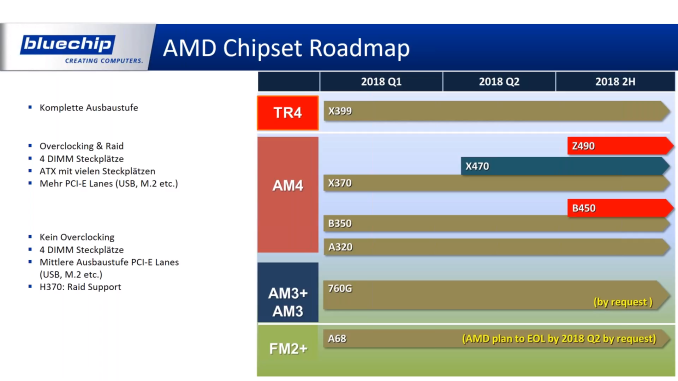


 Quote
Quote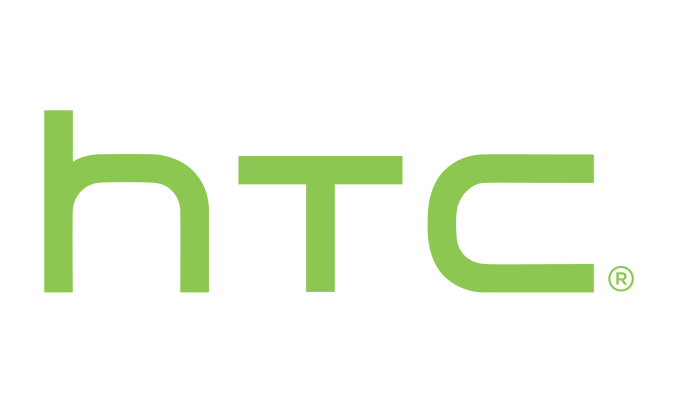
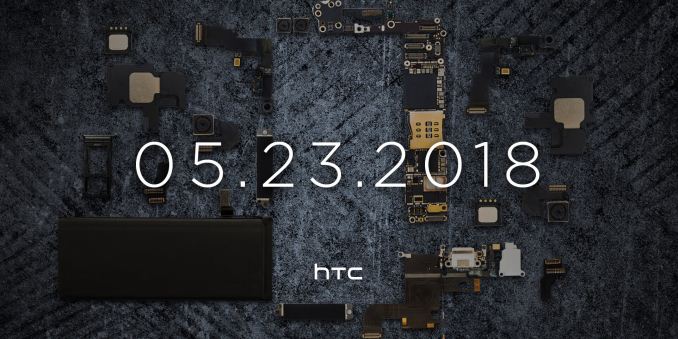

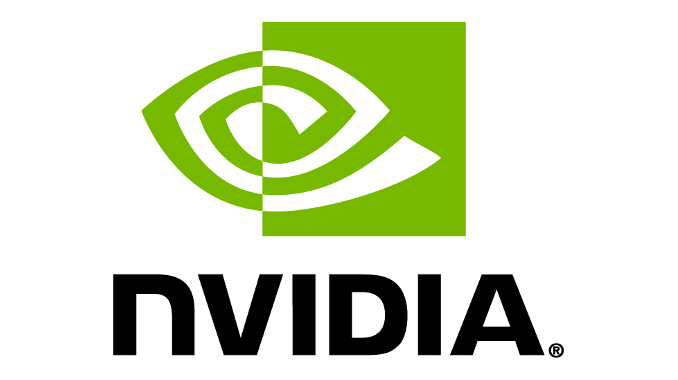


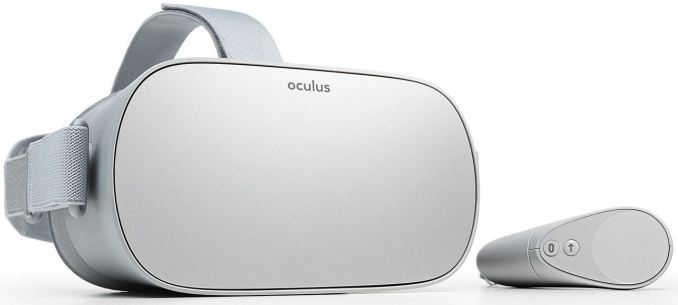
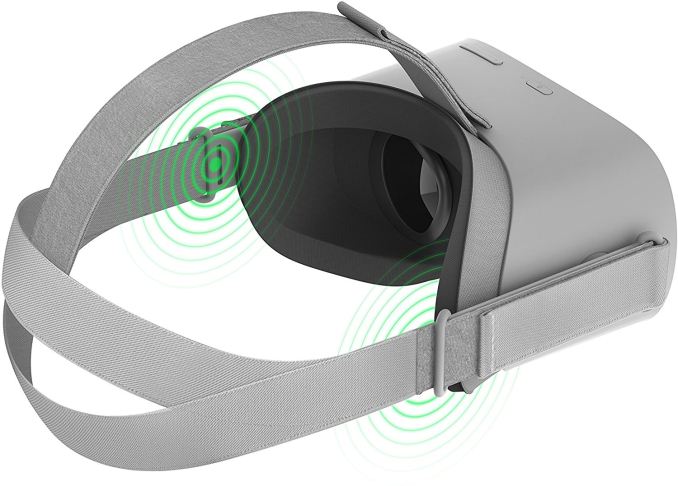

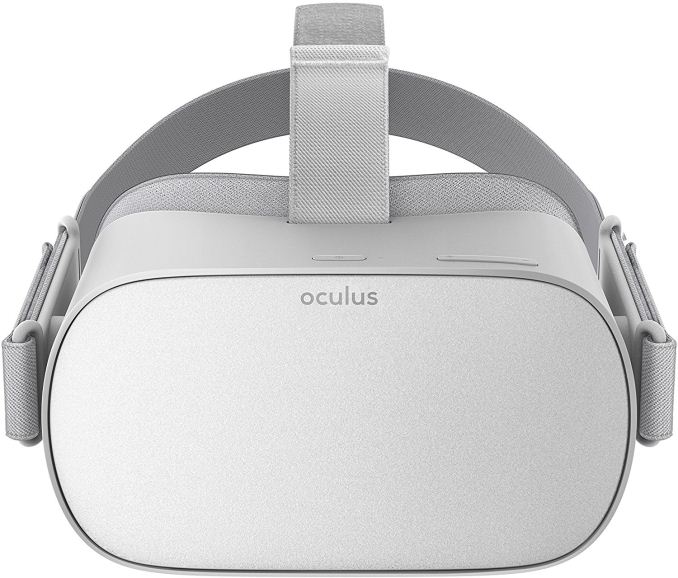
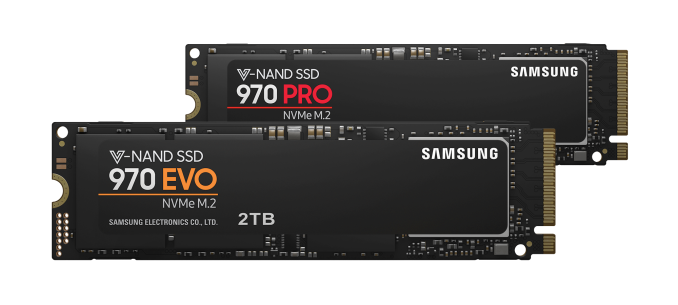

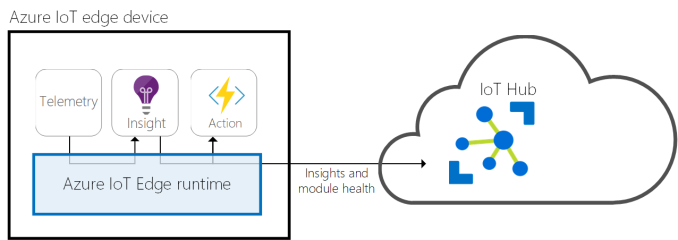
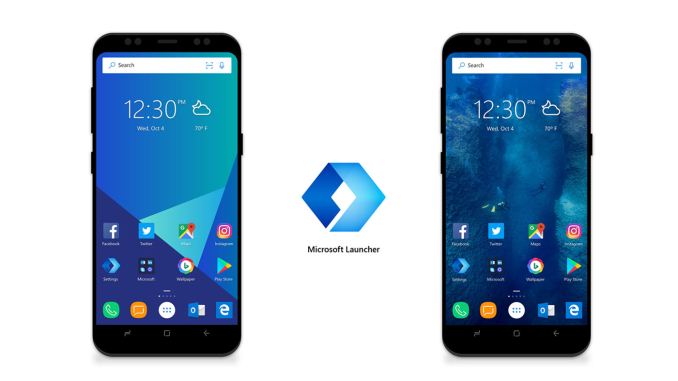
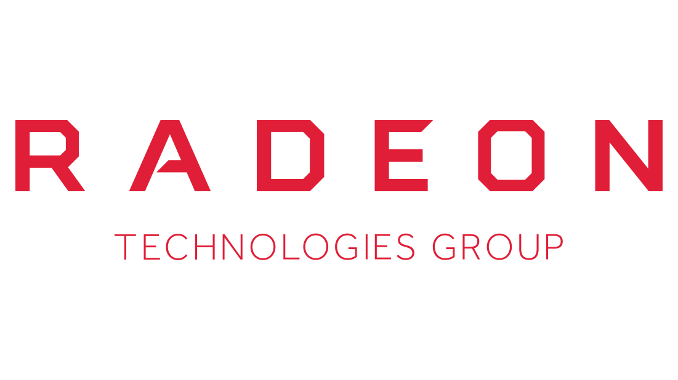
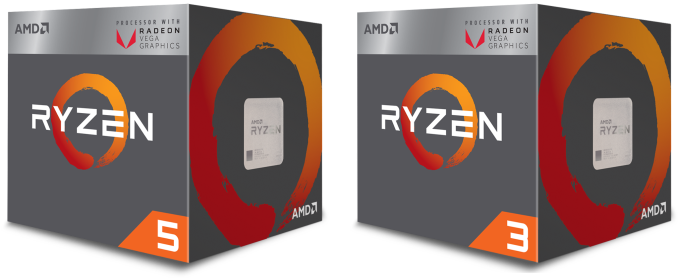
















Bookmarks